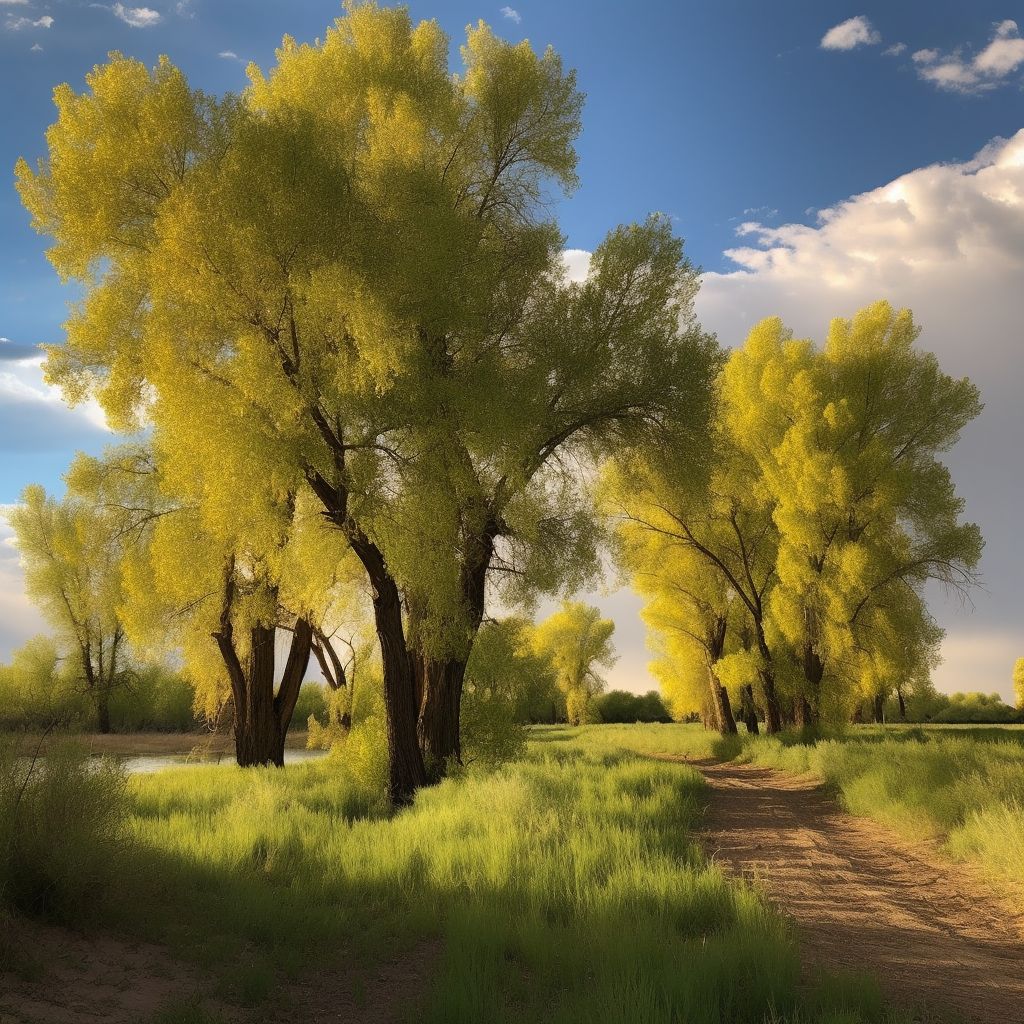Cottonwood
Cottonwood trees are a group of fast-growing deciduous hardwood trees native to various regions of North America. Belonging to the genus Populus, they are members of the Willow family, Salicaceae. The most common species in the United States include the Eastern cottonwood (Populus deltoides), the Fremont cottonwood (Populus fremontii), and the black cottonwood (Populus trichocarpa). Appreciated for their shade, adaptability, and rapid growth, cottonwood trees have been utilized for various purposes, from construction materials to erosion control, throughout the 19th century.
Description and Distribution
Cottonwood trees are characterized by their large size, often reaching heights of 60 to over 100 feet. The bark is typically light gray and smooth on young trees, becoming deeply furrowed and dark gray as the tree matures. The leaves are simple, triangular to heart-shaped, and have a serrated edge. Cottonwood trees are dioecious, meaning that male and female flowers occur on separate trees. The flowers are inconspicuous and give way to cotton-like seeds that are dispersed by the wind, lending the tree its common name.
The Eastern cottonwood is native to the eastern and central United States, stretching from the East Coast to the Great Plains and from southern Canada to northern Mexico. The Fremont cottonwood is native to the southwestern United States and Mexico, while the black cottonwood is found along the Pacific coast from Alaska to California. Cottonwoods typically thrive in moist, well-drained soils near rivers, streams, and other bodies of water.
Uses and Applications
Cottonwood trees have been valued for their rapid growth and adaptability, making them useful for a variety of applications in the 19th century. The wood is lightweight, relatively soft, and easy to work with, making it a popular choice for construction materials, such as fence posts, crates, and pallets. It was also used for making pulp and paper, as well as for carving and turnery.
The trees were often planted for erosion control along riverbanks and floodplains, helping to stabilize the soil and prevent the loss of valuable land. Their fast growth and large size also made them popular as windbreaks and shade trees in urban and rural settings.
Ecological Importance
Cottonwood trees play a vital role in their ecosystems. They provide habitat for various bird and mammal species, offering shelter, nesting sites, and food resources. The leaves and twigs are consumed by deer and other herbivores, while the tree's cavities can be used by cavity-nesting birds such as woodpeckers and owls. In addition, the roots of cottonwood trees help stabilize the soil, preventing erosion along watercourses and floodplains.
Cottonwood trees are also known for their role in riparian ecosystems. The trees' preference for moist soils and their ability to rapidly colonize new areas make them important components of these habitats. By stabilizing the soil and providing shade, cottonwoods contribute to maintaining the health of the waterways they inhabit.
Conclusion
Cottonwood trees are an important and versatile species in the United States, providing valuable resources and ecological services throughout the 19th century. Their rapid growth, adaptability, and various uses have made them a popular choice for construction materials, erosion control, and landscaping. As the nation continued to expand and develop during the late 1800s, the cottonwood tree played a vital role in shaping both the built and natural environments.

